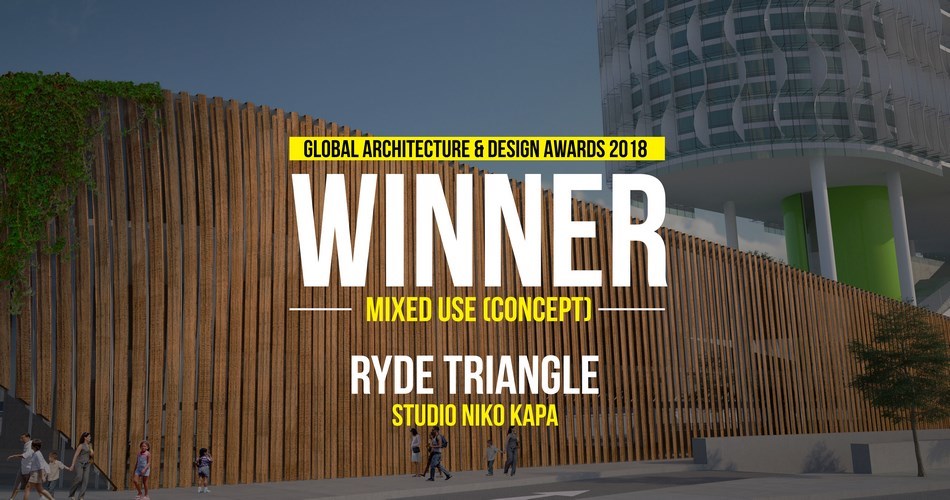The Ryde Civic Centre site is prominent in the local and regional context. Sitting at the crest of a ridge-line running northeast and southwest through Ryde town centre and situated 12 kilometers from the centre of Sydney, the Site presents an opportunity for speculation about the identity of town centers relative to proximate major centers.
Global Architecture & Design Awards 2018
First Award | Category: Mixed Use (Concept)
Architects: Niko Kapa
Country: United Arab Emirates

- To provide accommodation for local government council operations but in a manner by which, should a Council not be the occupant, the accommodation would be viable for commercial enterprises.
- To offer a range of multifunctional spaces, both open and enclosed, to support community needs.
- To house office and retail space to enhance employment and service local requirements.
- To provide apartment dwellings, with a significant proportion nominated as key-worker housing.
- To implement improved connectivity (it is an island site) for pedestrian access from adjacent precincts to the Top Ryde City shopping centre and its eastern neighborhood.
- To seek improved links to bus services with an underground bus terminus.
- Reestablishes a range of interconnected plazas at street level and connects these to the life of the city.
- Provides underground parking facilities at the “front door”.
- Improves access and pedestrian accessibility to the 2 levels of parking beneath and also provides connections to the Bus Interchange.
- Creates a memorable connection from the plaza to the new transit hub and concourse below.
- Surrounds the spaces with a green landscape veil that defines an oasis in the city and a pedestrian-friendly haven for social activity.
- Improves connectivity from adjacent precincts and Top Ryde City Shopping Center.
By placing people at the center of the design rather than vehicles the concept avoids the social fragmentation and lack of “community” in urban areas. Options for mobility including cycling and walking are treated as an integral part of the experience. The development provides improved circulation and acts as a connecting link to the surrounding parts of the city, whereas all the external as well as the internal areas of the buildings are accessible to people with disabilities.
The project seeks to build a connection beyond its neighbors with its geographic environment. It takes advantage of the slope to render the roof dominant over the territory and builds terraces and roof gardens that link leisure time with the surrounding landscape.
The proposal reconnects the area to the daily life of the city, tying into the city’s transportation systems and introducing new recreation systems such as bike paths, jogging trails as well as the overlay of transport options.
An elevated terrace seamlessly blends the residential block with the development, allowing the workers living together equally, sharing the same resources and public spaces, which reflects and stimulates positive changes to the culture.
If you’ve missed participating in this award, don’t worry. RTF’s next series of Awards for Excellence in Architecture & Design – is open for Registration.
Click Here
